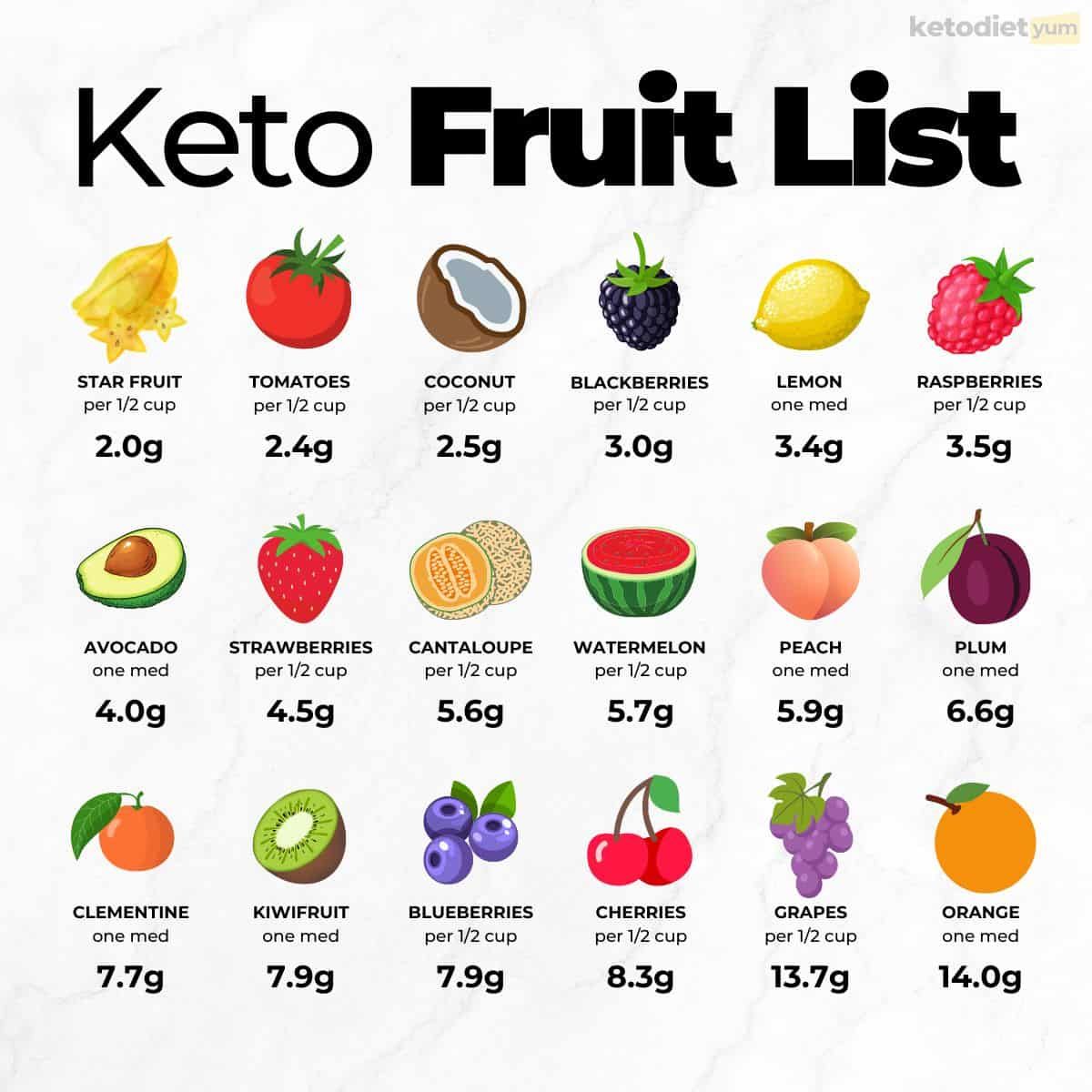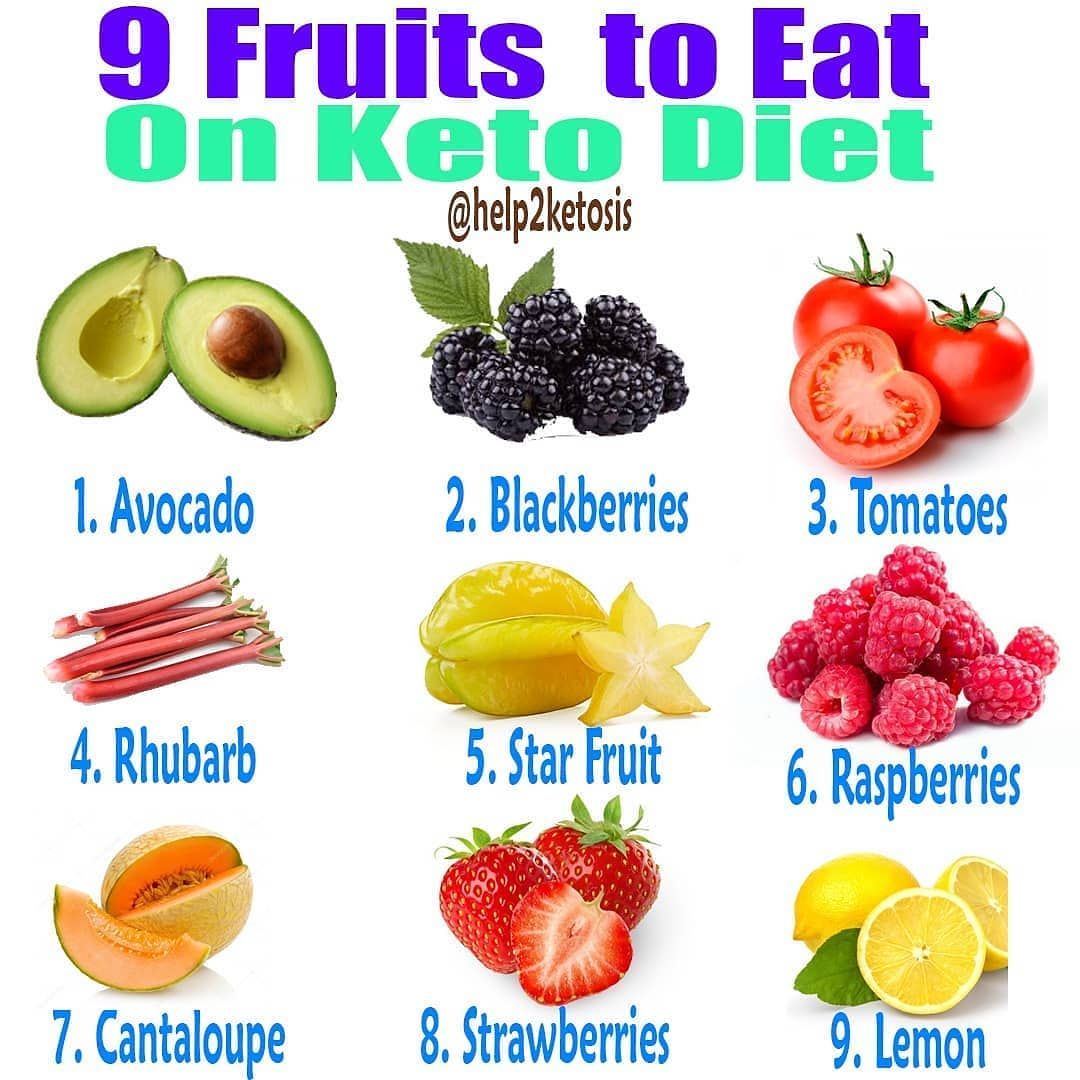Introduction

9 Fruits You Can Eat on the Keto Diet – The ketogenic diet, or keto diet for short, is a low-carb, high-fat diet that has gained popularity in recent years. The main principle of the keto diet is to drastically reduce carbohydrate intake, forcing the body to enter a state of ketosis.
In ketosis, the body burns fat for energy instead of carbohydrates, leading to weight loss and other health benefits.Fruits are generally high in carbohydrates, which makes them a restricted food group on the keto diet. However, there are a few fruits that are relatively low in carbs and can be enjoyed in moderation on the keto diet.
Role of Fruits in a Keto Diet
Fruits provide essential vitamins, minerals, and antioxidants that are important for overall health. However, the high carbohydrate content in most fruits makes them a challenge to incorporate into a keto diet. The key to eating fruits on the keto diet is to choose fruits that are low in carbohydrates and to limit portion sizes.
Top 9 Keto-Friendly Fruits

Top 9 Keto-Friendly Fruits, 9 Fruits You Can Eat on the Keto Diet
The following table lists the top 9 keto-friendly fruits, along with their net carbs per serving and nutritional benefits:
| Fruit | Image | Net Carbs per Serving | Nutritional Benefits |
|---|---|---|---|
| Avocados |
A green-skinned fruit with a creamy, buttery flesh. It is often used in salads, guacamole, and dips. |
1.5g per 1/2 avocado |
Avocados are a good source of healthy fats, fiber, and potassium. |
| Berries |
A group of small, round fruits that come in a variety of colors, including blueberries, strawberries, raspberries, and blackberries. |
5-10g per cup |
Berries are a good source of antioxidants, vitamins, and minerals. |
| Cantaloupe |
A large, orange-fleshed melon with a sweet, juicy flavor. |
8g per cup |
Cantaloupe is a good source of vitamin C, potassium, and beta-carotene. |
| Coconut |
A large, brown fruit with a hard shell and a white, fleshy interior. It is often used in desserts, smoothies, and curries. |
6g per 1/2 cup |
Coconut is a good source of healthy fats, fiber, and manganese. |
| Grapefruit |
A large, round fruit with a thick, white rind and a juicy, tart flesh. It is often used in salads, juices, and desserts. |
10g per 1/2 grapefruit |
Grapefruit is a good source of vitamin C, potassium, and fiber. |
| Lemons |
A small, yellow fruit with a thin, sour rind and a juicy, acidic flesh. It is often used in salads, desserts, and drinks. |
5g per 1/2 lemon |
Lemons are a good source of vitamin C, potassium, and citric acid. |
| Limes |
A small, green fruit with a thin, sour rind and a juicy, acidic flesh. It is often used in salads, desserts, and drinks. |
5g per 1/2 lime |
Limes are a good source of vitamin C, potassium, and citric acid. |
| Olives |
A small, oval fruit with a hard pit and a salty, oily flesh. It is often used in salads, appetizers, and main dishes. |
1g per 10 olives |
Olives are a good source of healthy fats, fiber, and antioxidants. |
| Strawberries |
A small, red fruit with a sweet, juicy flavor. It is often used in salads, desserts, and smoothies. |
6g per cup |
Strawberries are a good source of vitamin C, potassium, and fiber. |
Benefits of Eating Fruits on Keto
Incorporating keto-friendly fruits into your diet can provide numerous health benefits. These fruits are rich in essential nutrients and antioxidants that support overall well-being while adhering to the ketogenic diet.
Keto-friendly fruits are particularly beneficial for:
- Providing electrolytes:Fruits like avocados and berries are rich in electrolytes such as potassium, magnesium, and sodium, which are essential for maintaining fluid balance and preventing dehydration, especially during the initial stages of a keto diet.
- Boosting fiber intake:Berries and leafy greens contain dietary fiber, which helps promote satiety, regulate blood sugar levels, and support a healthy digestive system.
- Antioxidant support:Keto-friendly fruits are packed with antioxidants, such as anthocyanins in berries and flavonoids in citrus fruits, which help protect cells from damage caused by free radicals.
Considerations and Cautions
When incorporating fruits into a keto diet, it is crucial to remain mindful of carb limits to avoid exceeding them. Fruits contain natural sugars, so moderation is key. Additionally, monitoring blood glucose levels is recommended to ensure they do not spike too high after fruit consumption.
Balancing Fruit Consumption
To maintain a ketogenic state, it is essential to balance fruit consumption with other macronutrients, particularly fats and proteins. Prioritize nutrient-dense fruits like berries and avocados, which offer a balance of fiber, antioxidants, and healthy fats. Additionally, spacing out fruit intake throughout the day can help prevent carb overload and maintain stable blood sugar levels.
Conclusion: 9 Fruits You Can Eat On The Keto Diet
In summary, the nine keto-friendly fruits discussed—berries, avocados, tomatoes, lemons, limes, olives, cucumbers, bell peppers, and zucchini—offer a diverse range of nutrients and flavors to enhance your ketogenic diet.
Remember, moderation and mindful eating are key to a successful keto diet. While these fruits are lower in carbohydrates, it’s essential to track your intake and balance them with other keto-approved foods to stay within your daily carbohydrate limit.
Call to Action
Explore our curated recipes or additional resources to discover delicious and innovative ways to incorporate these fruits into your keto meals. By embracing these nutritious options, you can enjoy the benefits of fruit consumption while staying true to your keto lifestyle.